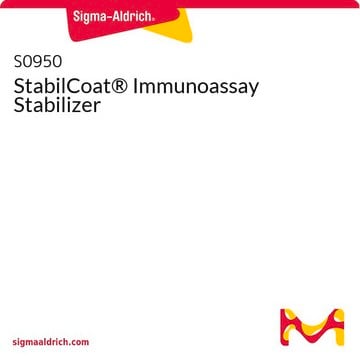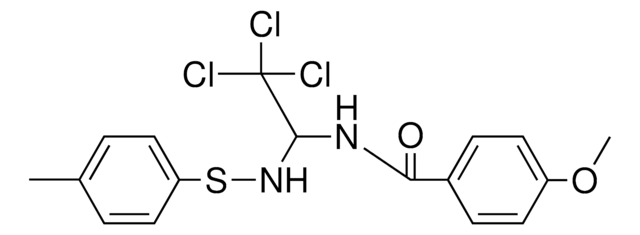S2002
Sodium azide
ReagentPlus®, ≥99.5%
Synonym(s):
Hydrazoic acid sodium salt
About This Item
Recommended Products
biological source
synthetic (inorganic)
Quality Level
product line
ReagentPlus®
Assay
≥99.5%
form
powder
storage condition
(Tightly closed. Dry. Keep in a well-ventilated place. Do not store near acids.)
technique(s)
cell based assay: suitable
immunohistochemistry: suitable
color
white
mp
370-425 °C
solubility
soluble 65 g/L at 20 °C (completely)
suitability
suitable for chromatography
suitable for derivatization
application(s)
sample preparation
SMILES string
[Na]N=[N+]=[N-]
InChI
1S/N3.Na/c1-3-2;/q-1;+1
InChI key
PXIPVTKHYLBLMZ-UHFFFAOYSA-N
Looking for similar products? Visit Product Comparison Guide
General description
Application
Catalyst for:
- Oxidative decarboxylation
- Michael addition reactions
Reagent for synthesis of
- Blue fluorescent copolymers
- Metal phosphonates
- Arenes via aminations
Biochem/physiol Actions
Other Notes
Legal Information
comparable product
suggested gloves for splash protection
Signal Word
Danger
Hazard Statements
Precautionary Statements
Hazard Classifications
Acute Tox. 1 Dermal - Acute Tox. 2 Inhalation - Acute Tox. 2 Oral - Aquatic Acute 1 - Aquatic Chronic 1 - STOT RE 2 Oral
Target Organs
Brain
Supplementary Hazards
Storage Class Code
6.1A - Combustible acute toxic Cat. 1 and 2 / very toxic hazardous materials
WGK
WGK 2
Flash Point(F)
Not applicable
Flash Point(C)
Not applicable
Choose from one of the most recent versions:
Already Own This Product?
Find documentation for the products that you have recently purchased in the Document Library.
Customers Also Viewed
Protocols
Antibody purification protocols yield preparations containing endogenous IgG alongside specific antibodies.
Antibody purification protocols yield preparations containing endogenous IgG alongside specific antibodies.
Antibody purification protocols yield preparations containing endogenous IgG alongside specific antibodies.
Antibody purification protocols yield preparations containing endogenous IgG alongside specific antibodies.
Our team of scientists has experience in all areas of research including Life Science, Material Science, Chemical Synthesis, Chromatography, Analytical and many others.
Contact Technical Service









![[(3R)-3-Hydroxytetradecanoyl]-L-carnitine analytical standard](/deepweb/assets/sigmaaldrich/product/structures/179/609/9ca2d958-e24e-4810-ab06-b5ee692b43b9/640/9ca2d958-e24e-4810-ab06-b5ee692b43b9.png)